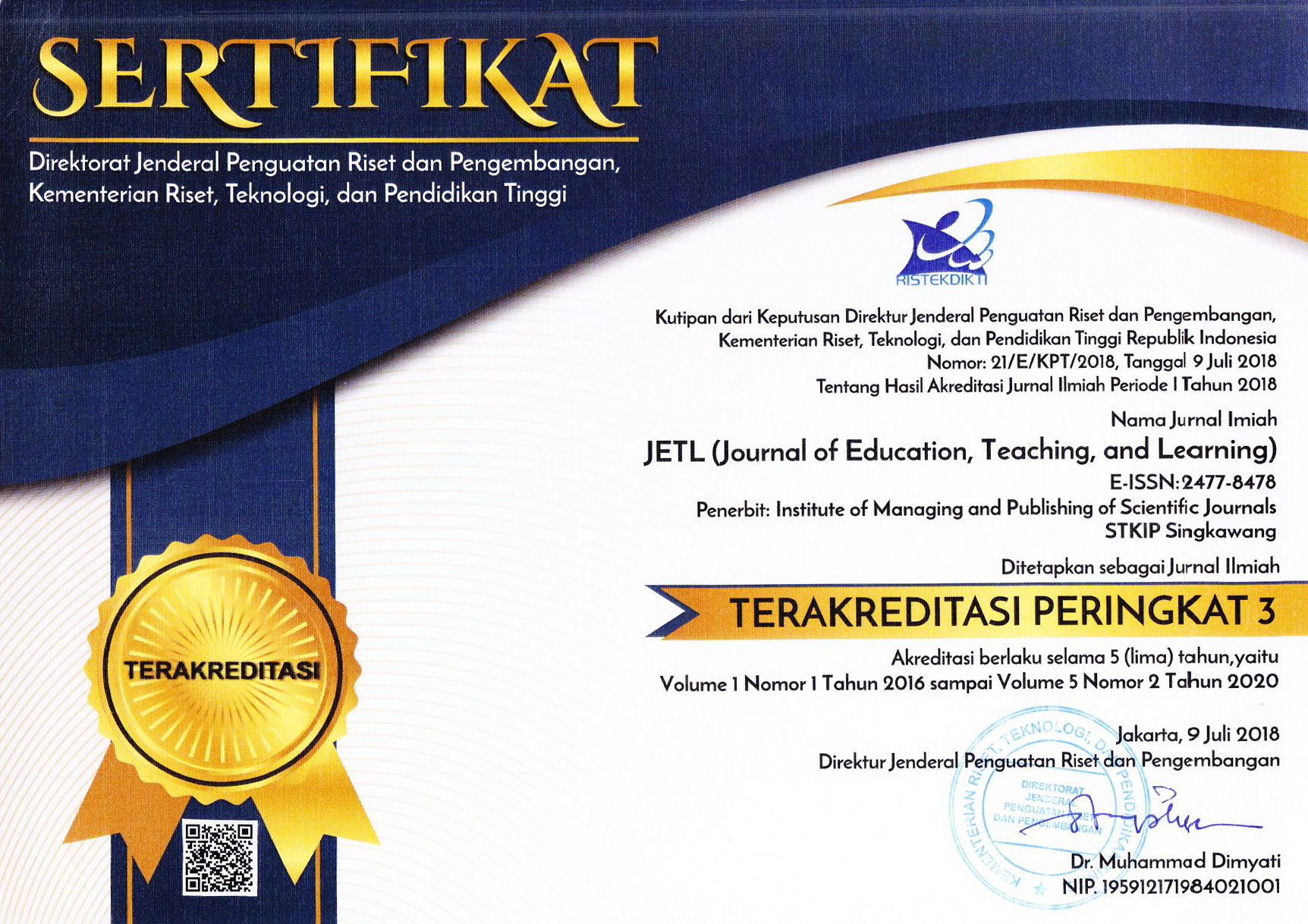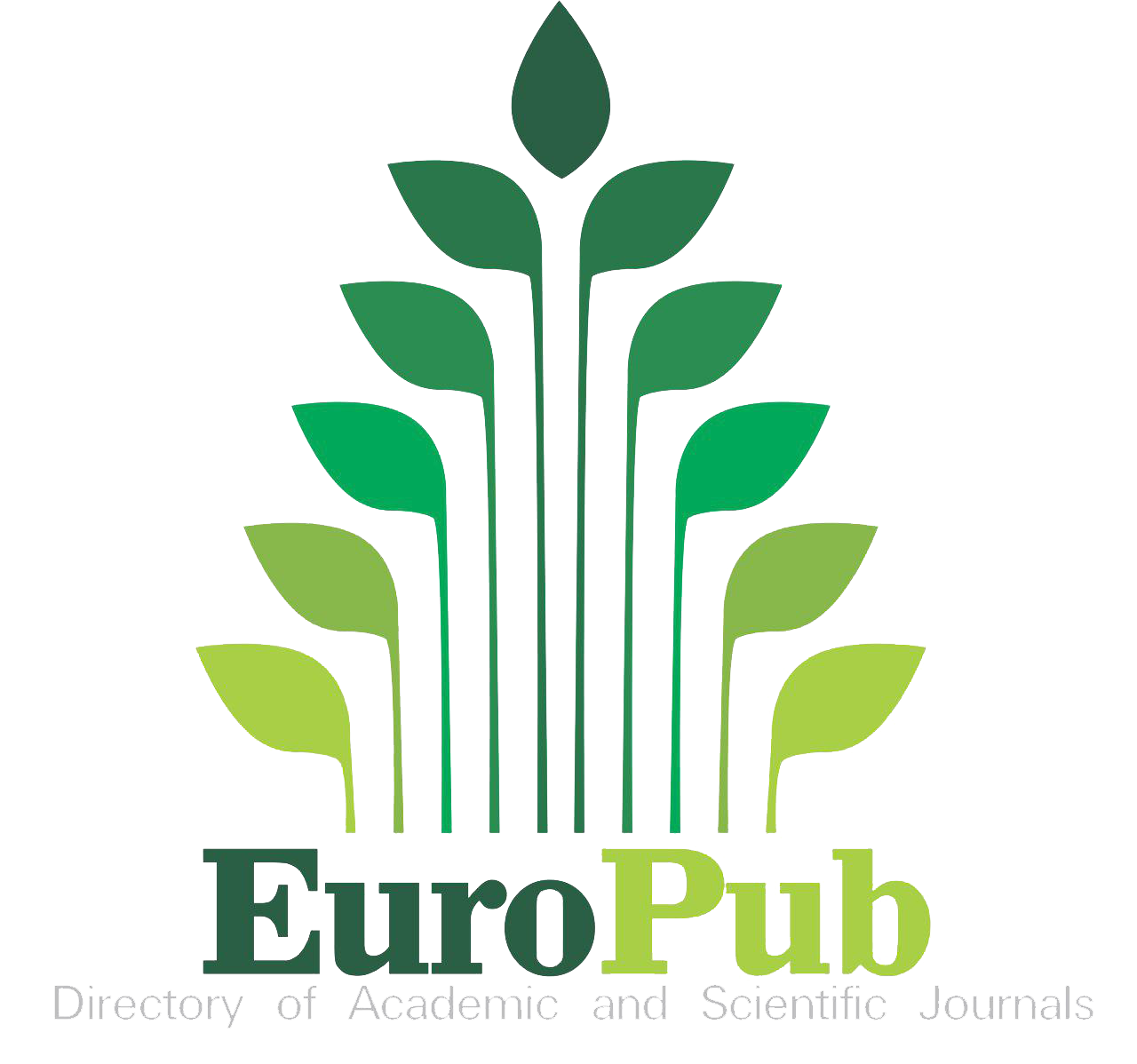Building Student’s Mathematical Connection Ability in Abstract Algebra: The Combination of Analogy-Contruction-Abstraction Stages
Abstract
Keywords
Full Text:
PDFReferences
Álvarez, J. A. M., & White, D. (2018). Making Mathematical Connections Between Abstract Algebra and Secondary Mathematics Explicit: Implications for Curriculum, Research, and Faculty Professional Development. Research in Mathematics Education, 175–185. doi:10.1007/978-3-319-99214-3_9
Cook, J. P. (2012). A guided reinvention of ring, integral domain, and field.. Dissertations. Oklahoma: University of Oklahoma. Available from ProQuest.
Creswell, J.W. (2017). Research Design (Pendekatan Metode Kualitatif, Kuantitatif, dan Campuran). Yogyakarta: Pustaka Belajar.
Dubinsky, E., Dautermann, J., Leron, U., & Zazkis, R. (1994). On Learning Fundamental Concepts Of Group Theory. Educational Studies in Mathematics, 27(3), 267–305. doi:10.1007/bf01273732.
Findell, B. R. (2001). Learning and understanding in abstract algebra. Dissertation. Durham: University of New Hampshire. https://scholars.unh.edu/cgi/viewconten t.cgi?article=1050&context=dissertation.
Golding, J. (2018). Mathematics Education in the Spotlight: its Purpose and Some Implications. London Review of Education, 16(3), 460–473. DOI https://doi.org/ 10.18546/LRE.16.3.08
Gómez-Ferragud, S.B., Solaz-Portolés, J.J., & Sanjosé, V. (2013). Analogy Construction and Success in Mathematics and Science Problem-Solving: a Study with Secondary Students. Revista de Psicodidáctica, 18(1), 81-108. 10.1387/.
Junarti, Sukestiyarno, Y. L., Mulyono, & Dwidayati, N. K. (2019a). The Profile of Structure Sense in Abstract Algebra Instruction in an Indonesian Mathematics Education. European Journal of Educational Research, 8(4), 1081-1091. http://doi.org/ 10.12973/eu-jer.8.4.1081.
Junarti, Sukestiyarno, Y.L., Mulyono, & Dwidayati, N.K. (2019b). The Influence Of Independent Learning and Structure Sense Ability On Mathematics Connection In Abstract Algebra. International Conference on Science and Education and Technology (ISET 2019). Advances in Social Science, Education and Humanities Research, Vol. 443. pp. 57-64.
Junarti, Sukestiyarno, Y.L., Mulyono, & Dwidayati, N.K. (2020a). The Process Of Structure Sense Of Group Prerequisite Material: A Case In Indonesian Context. Jurnal European Journal of Educational Research, 9(3), 1047 – 1061. https://doi.org/10.12973/eu-jer.9.3.1047
Junarti, Sukestiyarno, Y.L., Mulyono, & Dwidayati, N.K. (2020b). Studi Literatur tentang Jenis Koneksi Matematika pada Aljabar Abstrak. Prosiding Seminar Nasional Matematika 3, 343-352. https://journal.unnes.ac.id/ sju/index.php/prisma/.
Junarti. (2020c). Proses Structure Sense dari Kemandirian Belajar dalam Membangun Koneksi Matematika pada Materi Grup. Disertasi. Semarang: Program Pascasarjana Doktoral Pendidikan Matematika Universitas Negeri Semarang.
Murray, E., Baldinger, E., & Wasserman, N. (2017). Connecting Advanced and Secondary Mathematics. IUMPST: The Journal, Vol. 1. ISSN 2165-7874.
Novotná, J., Stehlíková, N., & Hoch, M. (2006). “Structure sense for university algebra” dalam J. Novotná, H. Moraová, M. Krátká, & N. Stehlíková (Eds.), Proceedings of the 30th Conference of the International Group for the Psychology of Mathematics Education. Prague, Czech Republic: PME. Vol. 4. pp. 249-256.
Novotná J. & Hoch M.. (2008). “How Structure Sense for Algebraic Expressions or Equations is Related to Structure Sense for Abstract Algebra”. Mathematics Education Research Journal, 20(2), 93-104.
Oktac A. (2016). Abstract Algebra Learning:Mental Structures, Definitions, Examples, Proofs and Structure Sense. Annales De Didactique Et De Sciences Cognitives, 21, 297 -316.
Pambudi, D. S., Budayasa, I. K., & Lukito, A. (2020). The Role of Mathematical Connections in Mathematical Problem Solving. Jurnal Pendidikan Matematika, 14(2), 129–144. https://doi.org/10.22342/jpm.14.2.10985.129-144
Pramasdyahsari, A.S. (2021). Developing the scripting task for mathematical connection between the university and school mathematics content. International Joint Conference on STEM Education (IJCSE) 2020. Journal of Physics: Conference Series. 1957 (2021) 012003. doi:10.1088/1742-6596/1957/1/012003
Richland, L.E., & Begolli, K.N. (2016). Analogy and Higher Order Thinking: Learning Mathematics as an Example.Behavioral and Brain Sciences, 3(2) 160–168. DOI: 10.1177/2372732216629795
Suominen, A. L. (2015). Abstract Algebra and Secondary School Mathematics: Identifying and Classifying Mathematical Connections. Dissertation. Georgia: Submitted to the Graduate Faculty of The University of Georgia in Partial Fulfillment of the Requirements for the Degree. Doctor Of Philosophy. Athens.
Suominen, A.L. (2018). “Abstract Algebra and Secondary School Mathematics Connections as Discussed by Mathematicians and Mathematics Educators” in Wasserman, N.H. (Ed.), Connecting Abstract Algebra to Secondary Mathematics, for Secondary Mathematics Teachers. New York, NY, USA: Springer.
Wasserman, N.H,. & Galarza, P. (2018). “Exploring an Instructional Model for Designing Modules for Secondary Mathematics Teachers in an Abstract Algebra Course”. in Wasserman, N.H. (Ed.), Connecting Abstract Algebra to Secondary Mathematics, for Secondary Mathematics Teachers New York: Springer. 335-360.
Yoshioka, H., & Higashibata, S. (2019). Analysis of mathematical connection in abstract algebra. Journal of Physics: Conference Series, 1321, 1–4. https://doi.org/10.1088/1742-6596/1321/2/022105
Zbiek, R.M., & Heid, M. K. (2018). “Making Connections from the Secondary Classroom to the Abstract Algebra Course: A Mathematical Activity Approach” dalam Wasserman, N.H. (Ed.), Connecting Abstract Algebra to Secondary Mathematics, for Secondary Mathematics Teachers. New York, NY, USA: Springer. 189-208.
DOI: http://dx.doi.org/10.26737/jetl.v8i1.3796
Refbacks
- There are currently no refbacks.

This work is licensed under a Creative Commons Attribution-NonCommercial 4.0 International License.
Published by:
Institute of Managing and Publishing of Scientific Journals STKIP Singkawang
Sekolah Tinggi Keguruan dan Ilmu Pendidikan (STKIP) Singkawang
Address : STKIP Singkawang, Jalan STKIP - Kelurahan Naram Singkawang, Kalimantan Barat, INDONESIA, 79251
No. Telp. : +62562 420 0344
No. Fax. : +62562 420 0584
JETL (Journal of Education, Teaching, and Learning)
e-ISSN : 2477-8478
p-ISSN : 2477-5924

Editor in Chief Contact: [email protected] / Wa: +6282142072788
Publisher Contact: [email protected] / Wa: +6282142072788
Management Tools
JETL Indexed by:
JETL (Journal of Education, Teaching, and Learning) is licensed under a Creative Commons Attribution-NonCommercial 4.0 International License.











